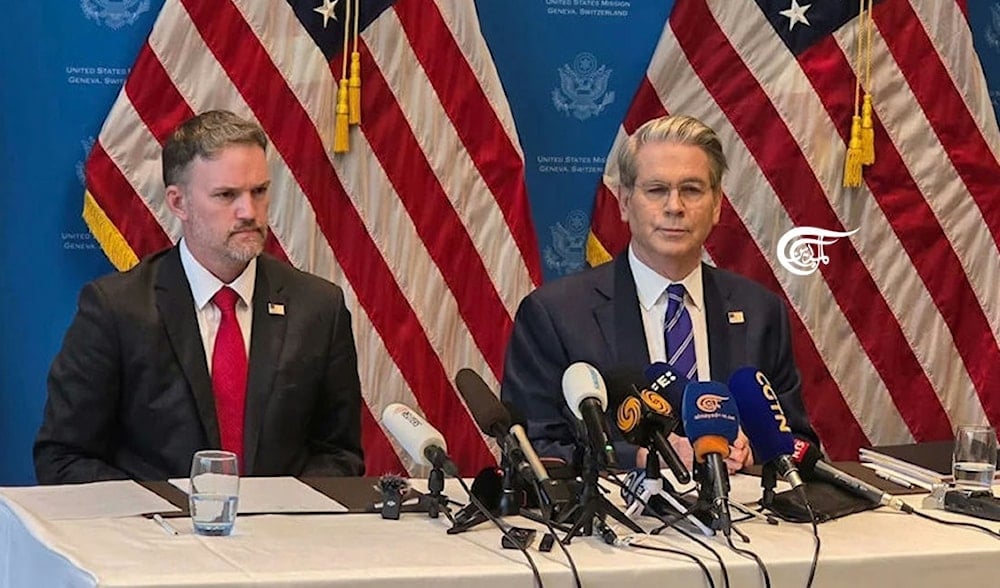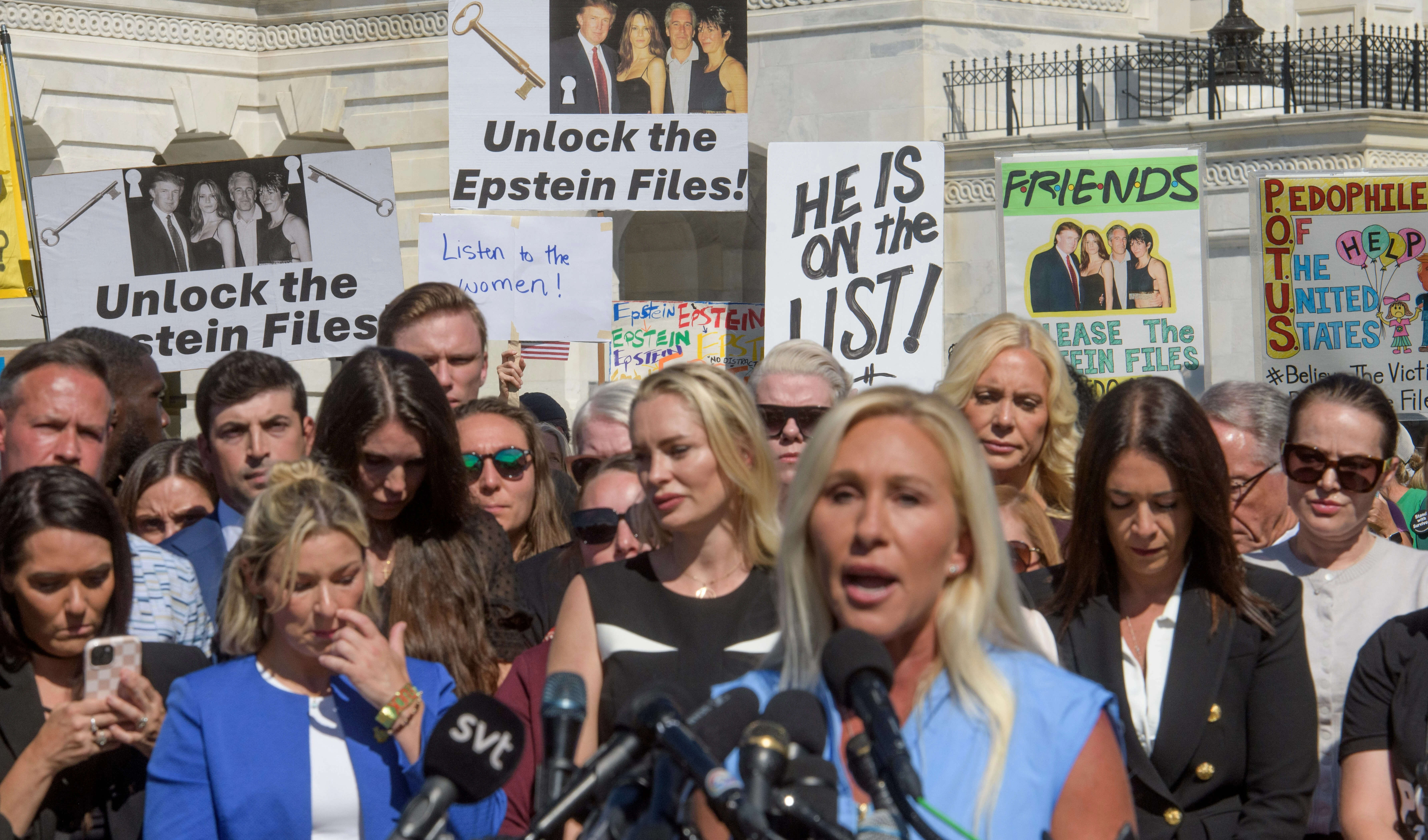US, China reach tariff reduction trade deal to ease tensions, effects
After months of tariff escalations under Trump's revived trade agenda, the US and China agree to a temporary rollback, easing pressure on markets and key industries.
-

US Treasury Secretary Scott Bessent, speaking alongside US Trade Representative Jamieson Greer in Geneva (Al Mayadeen)
The United States and China have agreed to significantly reduce tariffs on each other’s goods, marking a breakthrough in a years-long trade war that has disrupted global supply chains and intensified economic uncertainty.
The announcement came on Monday following a round of high-level negotiations in Geneva, the first in-person talks since US President Donald Trump returned to office. Under the new US-China tariff deal, both sides will implement a 90-day pause on new trade measures and lower existing tariffs from over 100% to 10%.
“This is a step toward balanced trade and mutual economic stability,” said US Treasury Secretary Scott Bessent, speaking alongside US Trade Representative Jamieson Greer. “Both countries represented their national interest very well.”
Earlier this year, Trump reignited his China trade policy, raising tariffs on Chinese imports to 145%, citing national security and economic imbalances. The move built on prior actions from his first term and measures left in place by the Biden administration.
Beijing retaliated by tightening export controls on rare earth elements essential to US defense, energy, and tech sectors, while also hiking tariffs on American goods to 125%. The escalating trade war had paralyzed nearly $600 billion in bilateral commerce, fueled inflation fears, and led to job losses across multiple industries.
'Robust' Geneva talks
On his part, US Treasury Secretary Scott Bessent described weekend negotiations with Chinese Vice Premier He Lifeng and trade envoy Li Chenggang as both “productive” and “robust".
“Both sides showed a great respect,” Bessent told reporters following the talks, held at the Geneva residence of Switzerland’s UN ambassador.
Following the Geneva talks, Bessent confirmed both sides agreed to roll back those steep duties by 115% points, bringing US tariffs down to 30% and China’s to 10%. The two sides also committed to creating a “mechanism to continue discussions about economic and trade relations,” signaling that diplomacy, not escalation, may define the next chapter of this contentious relationship.
Meanwhile, China’s Ministry of Commerce praised the outcome, calling it “substantial progress” and said the move aligned with “the common interest of the world.” Beijing also voiced cautious optimism, urging Washington to continue correcting what it called “the wrong practice of unilateral tariff rises.”
In a similar vein, WTO Director-General Ngozi Okonjo-Iweala hailed the agreement as a “significant step forward” that “bode well for the future,” noting that it brings relief not only to Washington and Beijing, but also to “the most vulnerable economies” caught in the crossfire of the tariff war.
Positive market reaction signals hope for recovery
The tariff reduction agreement brought immediate relief to global markets. US stock futures rose, and the dollar gained strength against safe-haven currencies. Investors interpreted the news as a sign that prolonged economic fallout, especially inflation and supply disruptions, might be avoided.
The agreement may also help repair strained US-China trade relations and restore confidence among international partners navigating between the world’s two largest economies.
Simultaneously, Chinese equities surged and the yuan hit a six-month high on Monday. The market reaction was swift. Hong Kong’s benchmark Hang Seng Index (HSI) jumped over 3%, while the Hang Seng Tech Index (STECH) soared more than 5%. On the mainland, the CSI 300 Index (.CSI300) gained 1.2%, and the Shanghai Composite Index (.SSEC) rose 0.8% ahead of the deal’s details.
In currency markets, the yuan climbed to 7.2001 per dollar, its strongest level in six months, while the offshore yuan rose more than 0.5%.
“The result far exceeds market expectations,” said William Xin, chairman of Spring Mountain Pu Jiang Investment Management in Shanghai. “Previously, the hope was just that the two sides could sit down to talk. Now there's more certainty. Both Chinese stocks and the yuan will be in an upswing for a while."
While the CSI300 initially plunged following those announcements, it has now almost fully recovered to early-April levels. The Hang Seng Index remains slightly down at 0.3% since April 2, but analysts expect momentum to continue if diplomatic progress holds.
Meanwhile, the yuan has seen a modest 0.4% gain since early April, bolstered in part by capital flight from dollar-denominated assets as investors reevaluate exposure to US markets.
Sidebar: Sectors poised to benefit from the tariff cuts
1. Technology & electronics
High tariffs had severely disrupted US imports of semiconductors, smartphones, and consumer electronics. With duties reduced to 10%, manufacturers like Apple, Dell, and Intel are expected to regain smoother supply chains and lower component costs.
2. Agriculture
American soybean, corn, and pork producers, previously targeted by Chinese tariffs, stand to benefit. Lower duties will reopen export markets, stabilizing prices and restoring lost contracts for US farmers.
3. Automotive
Both US and Chinese automakers are set to gain. Tesla and GM may expand exports to China, while Chinese electric vehicle makers like BYD could regain market access in the US under the new tariff regime.
4. Industrial machinery, equipment
Tariff relief will lower costs for US industries dependent on Chinese-made components, helping firms in construction, energy, and logistics resume operations without inflated supply expenses.
5. Rare earth elements, advanced materials
The rollback may ease China’s export restrictions on rare earths, which are crucial to US aerospace, military, and renewable energy development, though no formal export deal has been announced yet.
6. Consumer goods
US importers of textiles, toys, furniture, and appliances are likely to benefit from reduced prices, possibly passing on savings to consumers amid broader inflation concerns.
Next steps in US-China trade negotiations
While the Geneva deal marks a significant shift, both countries have emphasized that broader discussions will continue. The 90-day window is seen as a confidence-building phase toward a more durable framework.
Trade experts warn, however, that deeper structural issues, such as intellectual property rights, technology transfer, and industrial subsidies, remain unresolved. Nonetheless, the breakthrough provides a pause in a years-long conflict that had intensified global economic anxiety.

 6 Min Read
6 Min Read









